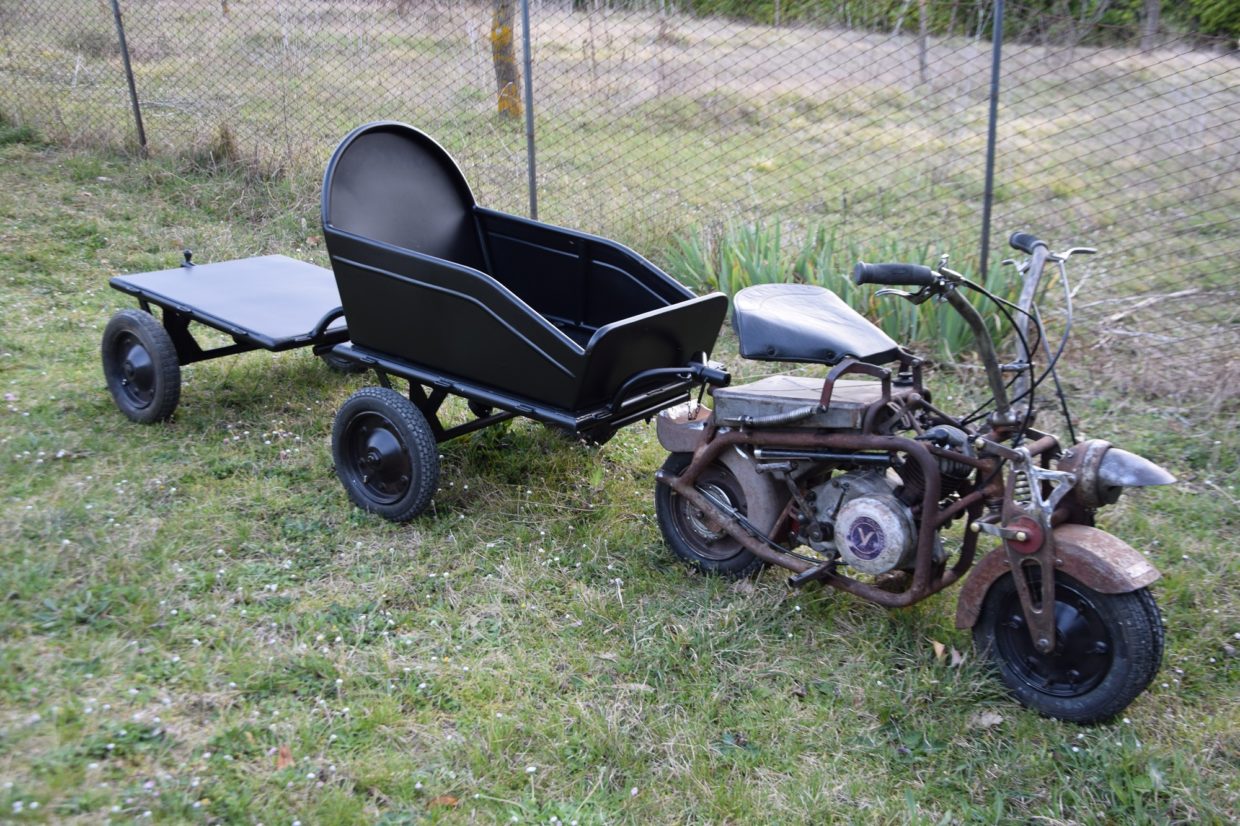This entry is also available in: Russian
By the middle of World War II several countries involved in the conflict thought it would be a good idea to have a transport that could be thrown to the front at the same time as the paratroopers. At the time, the maximum load that parachutes could carry was barely equal to the weight of a man in full combat gear, so efforts were made to find a vehicle that would stay within those limits.
The British had already developed the Welbike, the Americans were working on the Cushman motorcycle, and the Italian government in 1942 issued a tender to design and build small motorcycles for use as paratrooper transport.
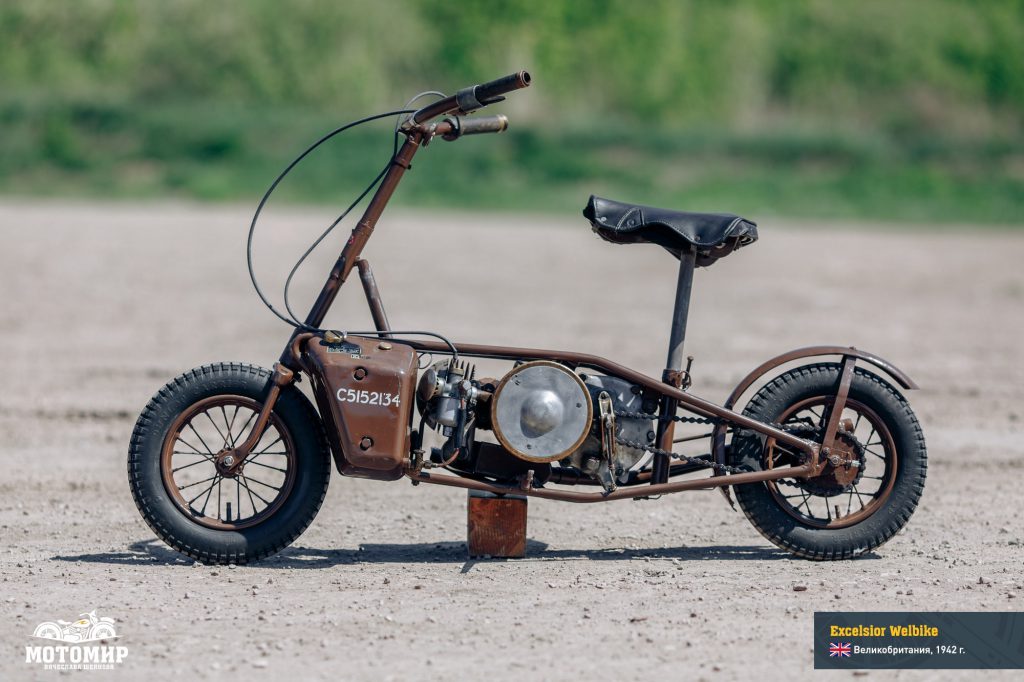
Among those who took up the development was the Turin-based Volugrafo company, whose owner Claudio Belmondo had worked with the army for many years supplying fuel gauges to the Air Force.
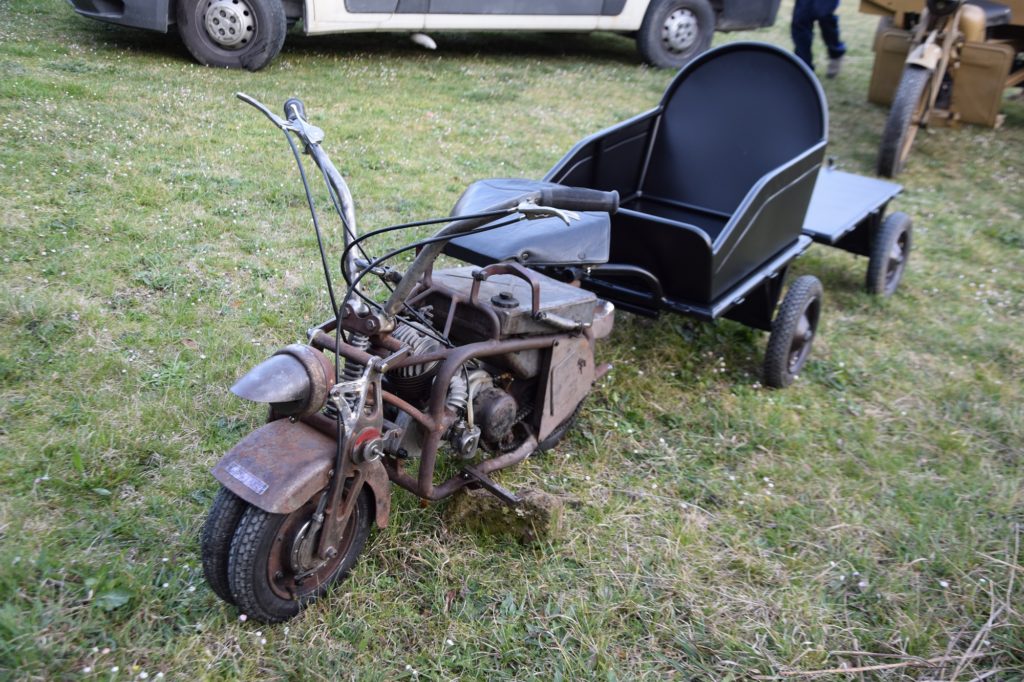
Volugrafo, though a large mechanical workshop, had never dealt with motorcycles, got its hands on an English Welbike and set out to analyze it. The main problem, according to Belmondo, was that because of the narrow tires, it could not pass over muddy or sandy terrain.
The handling was of minimal importance, and there was no time or money to develop special tires that had to be small but wide because of the heavy weight of the rider, so the problem was solved by combining two small wheels, widely available on the market and designed for three-wheeled bakery bikes. Of course, another reason was voiced: in case one wheel went flat, the bike could keep going. These same wheels were the worst drawback of the Aermoto: the bike could not move on four wheels, it would always fall over on one side and you would ride either on the right pair or on the left pair of wheels. The brake drums were mounted on both axles and operated by hand levers.
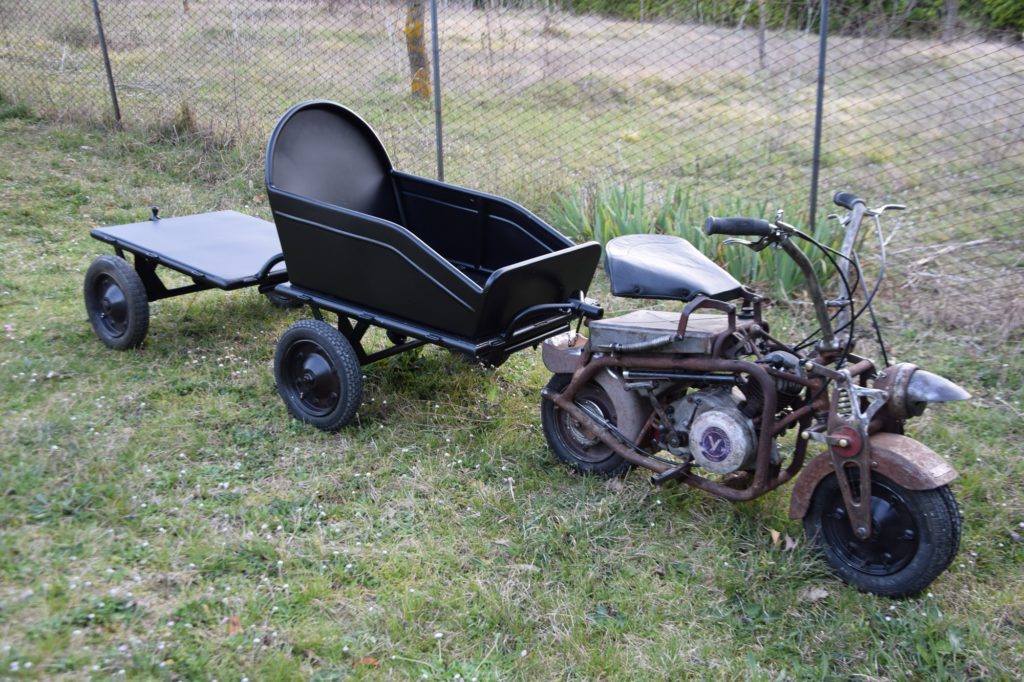
As the story goes, the Italian Army set up a course that included dirt, sand and steep hills and said that all competitors would start from a certain point and that the first one to reach the finish line would get a contract. The little machine, made in a machine shop, took first place.
Along with the Aermoto, a special trailer was also designed and made: a small platform equipped with two quick-release wheels (the same as a motorcycle, but single). One small Volugrafo could pull six or eight of these trailers.
The engine used was a 125cc two-stroke, with a dynamo providing spark for the spark plug and power for the headlight. A Dell’Orto carburetor supplied fuel through a very long, curved intake manifold. The exhaust pipe ran from the left side of the cylinder directly into the frame, and from there went through the frame to two mufflers, one on each side of the rear wheel.
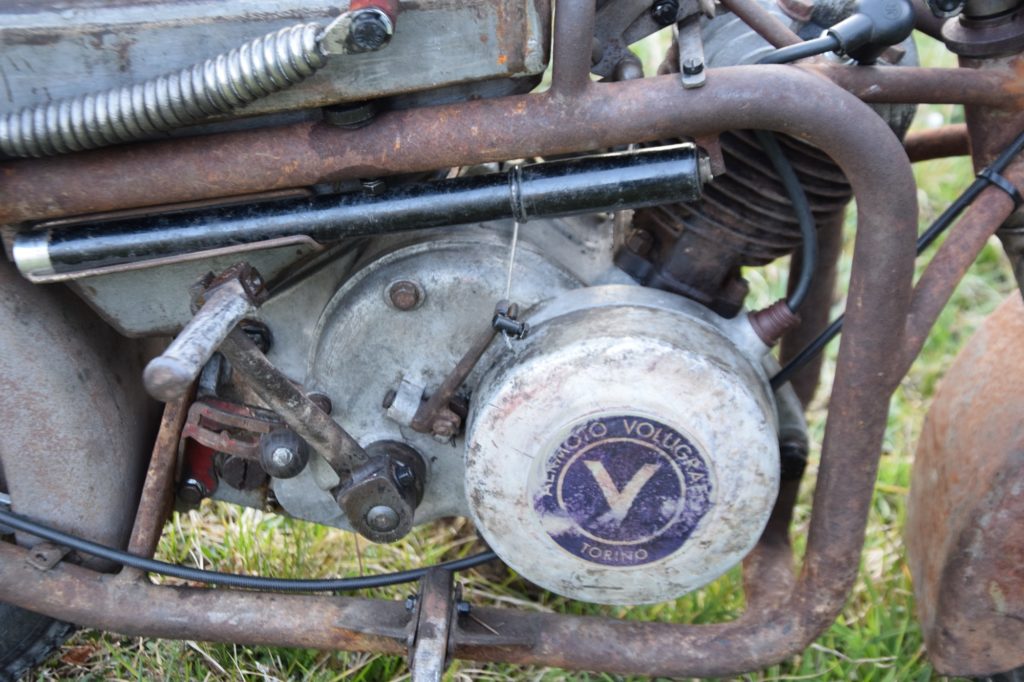
Unlike the Welbike, the bike had a two-speed gearbox with a manual shift and a downshift providing three gears The downshift was controlled by a manual switch located on the lower right side of the gearbox behind the kickstarter. In the lowest gear, only a lack of traction prevented it from climbing straight up the wall.
A wrap-around tubular frame protected the engine from almost any danger. A large gas tank under the seat held 11 liters of fuel so the soldier could ride the motorcycle all the way to the rearward.
Folding the motorcycle consisted of turning the handlebars almost 180° so that they lay next to the fork feathers. If a parachute method was used for delivery, the motorcycle could be packed in a small container.
Not many Volugrafo are extant now. It is believed that only 270 were built by the Officina Meccaniche Volugrafo in Turin, Italy, before the Italians decided they had had enough of this silly war.
They got rid of Mussolini, signed an armistice with the Allies and withdrew from the war on September 3, 1943. Volugrafo was no longer needed.
The Volugrafo in these photos was offered to the Vyacheslav Sheyanov Motomir Museum of Technology by the famous Italian restorer and our friend Costantino Frontalini, whose specialty is sidecar motorcycles and tricycles.
The car is currently being restored, but will soon be delivered to our museum. Subscribe to our social networks and don’t miss your chance to be the first to see a four-wheeled motorcycle!
| Manufacturer | Officina Meccaniche Volugrafo, Turin, Italy |
| Years of manufacture | |
| Quantity produced, units | 270 |
| Price | |
| Today’s value |
| ENGINE AND TRANSMISSION | |
| Type | Single cylinder, 2-stroke |
| Engine capacity, cc | 125 |
| Bore and stroke, mm | 52 x 56 |
| Engine rating | 2 hp at 3600 rpm |
| Sparking | Bosch UL-A I CL 27 |
| Carburetor | Dell’Orto T 2/16 (80/16) |
| Battery | |
| Clutch | |
| Transmission | 2-speed with multiplier |
| FRAME AND WHEELBASE | |
| Frame type | Tubular |
| Front suspension | Parallelogram |
| Rear suspension | None |
| Brakes | Drum type |
| Wheel size | 2,50 x 8 |
| DIMENSIONS | |
| Length, mm |
|
| Width, mm |
|
| Height, mm |
|
| Wheelbase, mm |
|
| Ground clearance, mm |
|
| Cargo max weight, kg |
|
| Mass, kg |
59
|
| Gas tank size, l |
9,5
|
| Maximum speed, km/h |
104
|
| Range, km |
|

